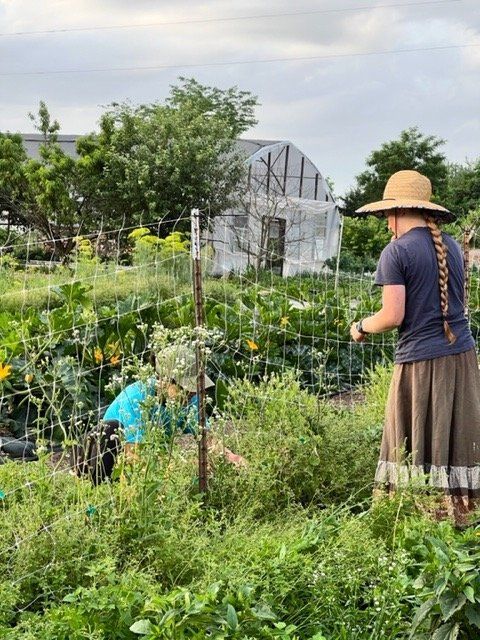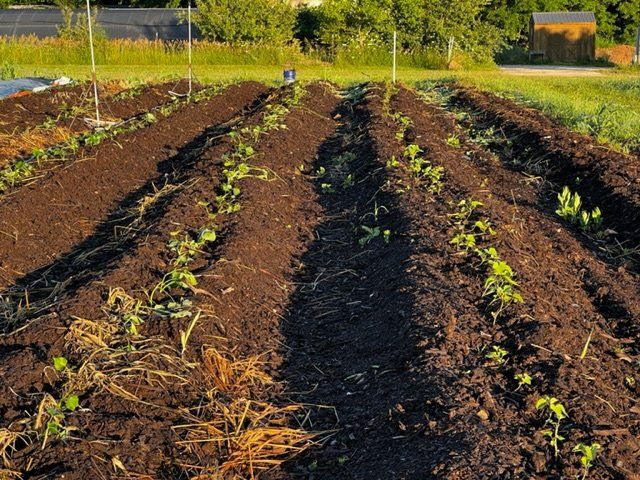The heat keeps coming, and so does the good produce. You'll see a few more slicing tomatoes on the list today, with the bulk of the tomatoes still behind schedule... but lots of great berries, arugula (if you haven't tried an arugula/blueberry salad, you might give it a whirl), Kohlrabi (we love kohlrabi slaw), and other goodies.
This time of year we get asked a lot about how heat effects the farm, so I thought I’d share some insights about high temperature vegetable growing. Like many aspects of our farm, we look at this through three lenses; people, profits, and planet. For the people on the farm, the heat means challenging work conditions; 95 degrees with 70% humidity makes for miserably sweaty weather, so we rise early, starting work at 6 a.m., and get a head start on the heat. That means that by 1p.m. we are hot, sweaty, and ready for lunch, which is the end of our official work day. If we have things what must get done, we will wait until after the heat passes, 6 or 7 p.m., and go back out to work. We call this the siesta schedule, and it helps us face the dog days of summer with energy and stamina. It also helps that most days we take a trip to the creek to dip and cool off, and we occasionally take off a whole day to float a creek and thoroughly relax and refresh the crew. In terms of profits, hotter days mean a change in what we can grow for sale; the lettuces and most other salad greens are just too stressed by this heat and bolt (go to seed) before they are large enough to harvest, while some crops like tomatoes and bell peppers and cucumbers shrug off the heat and ramp up production. If it gets too hot, even the tomatoes can revolt; night time temperatures consistently above 75 will cause tomatoes to drop their blossoms, which means no new fruit being set. This is the sort of problem that has a delayed cost; 4 weeks after an extreme hot spell we find that the tomatoes have a gap in fruit supply. We can deal with this to some extent by sheltering tomatoes from the worst of the suns rays, planting later successions of heat tolerant varieties (florida 91’s are one such variety), and keeping them well watered, but ultimately we can only do so much, and high heat decreases yields, leaving fewer veggies for our members and our market stand. Finally, from the environmental, or planet perspective, we have increased energy use when the temps are high, due to increased water usage and a heavier load on our walk-in cooler. Our efforts to reduce water and electricity pay their biggest dividends this time of year, and we hope to continue to reduce our footprint this way as we refine and remodel our farm stand space, along with improving our soils, which reduces our need for watering. All in all, heat is one of the bigger challenges of our climate; it stresses people, the budget, and our commitment to reducing our environmental impact, but over time we’ve developed systems which help us cope and even thrive. Plus, what would summer be without a few hot days to spend in the creek eating blueberries?
Thanks for trusting us to be your farmers.
Curtis and the crew.




